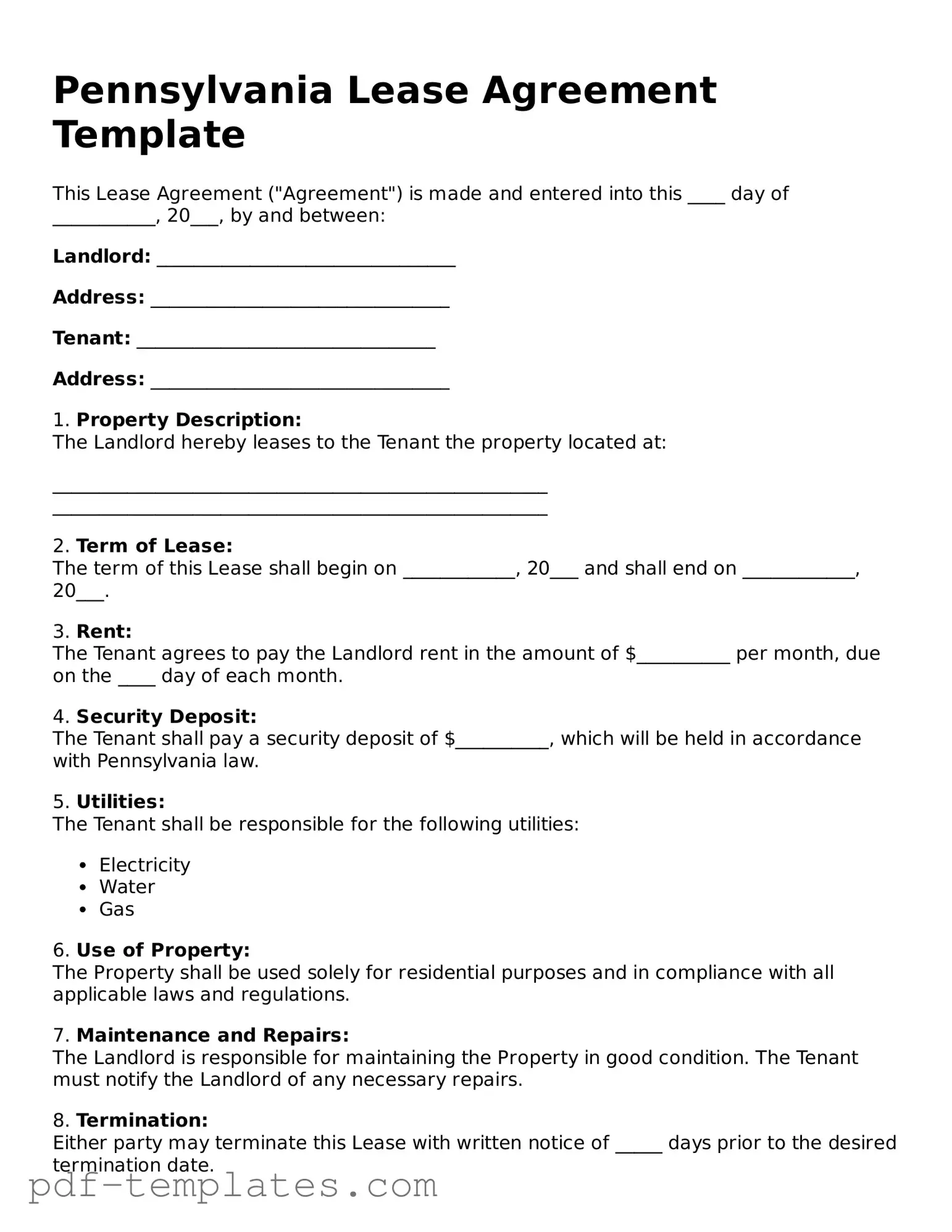The Pennsylvania Lease Agreement is similar to the Residential Lease Agreement, which is commonly used across many states. Both documents serve to outline the terms and conditions under which a landlord allows a tenant to occupy a property. Key elements include rental amounts, duration of the lease, and responsibilities regarding maintenance and repairs. The clarity provided in these agreements helps prevent disputes and ensures that both parties understand their rights and obligations.
Another document that shares similarities is the Commercial Lease Agreement. While primarily designed for business properties, it also includes essential terms such as rent, lease duration, and maintenance responsibilities. The main difference lies in the specific terms tailored to business operations, but both agreements aim to protect the interests of landlords and tenants alike.
The Month-to-Month Lease Agreement is also akin to the Pennsylvania Lease Agreement, especially in its flexibility. This type of lease allows tenants to occupy a rental property on a month-to-month basis, making it easier for both parties to terminate the agreement with proper notice. Like the Pennsylvania Lease Agreement, it outlines rental amounts and responsibilities, but it provides more fluidity in terms of duration.
The Sublease Agreement is another document that resembles the Pennsylvania Lease Agreement. This agreement allows a tenant to rent out the property they are leasing to another individual, known as the subtenant. It includes similar terms regarding rent and responsibilities, ensuring that the original tenant remains compliant with the landlord’s requirements while also protecting the interests of the subtenant.
The Rent-to-Own Agreement is also comparable, as it combines elements of leasing and purchasing a property. This document allows tenants to rent a property with the option to buy it later. It outlines rental terms, purchase price, and conditions under which the tenant can exercise their option to buy, similar to how a standard lease agreement sets forth the rules for rental occupancy.
The Lease Option Agreement shares features with the Pennsylvania Lease Agreement as well. This document allows tenants to lease a property with the option to purchase it at a later date. It details the lease terms and the conditions under which the tenant can opt to buy the property, making it a hybrid of leasing and purchasing agreements.
When considering alternative educational paths, parents may find resources like the Homeschool Letter of Intent form particularly useful. This document plays a critical role in formalizing the decision to homeschool, ensuring compliance with local regulations while outlining the educational framework for their children. Understanding its importance can help families transition smoothly into the homeschooling experience.
The Cooperative Housing Agreement is another similar document, primarily used in cooperative housing situations. This agreement outlines the rights and responsibilities of residents who share ownership of the property. It includes terms regarding occupancy, maintenance, and financial obligations, much like a lease agreement, but it also emphasizes the cooperative nature of the living arrangement.
Lastly, the Rental Application Form is akin to the Pennsylvania Lease Agreement in the sense that it is often used in the leasing process. While not a lease itself, this document collects essential information from potential tenants, such as employment history and references. The information gathered helps landlords assess the suitability of applicants before entering into a lease agreement, ensuring a more informed decision-making process.
